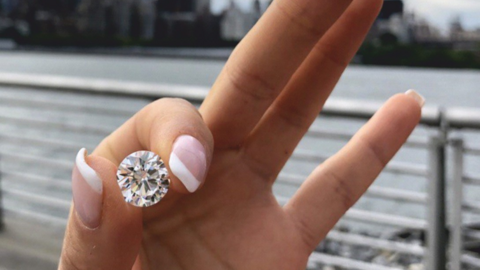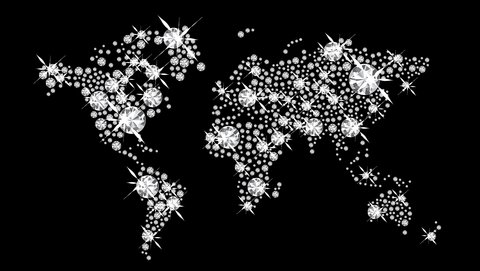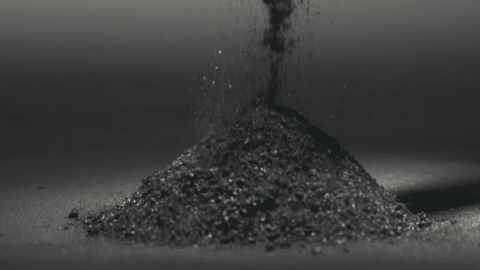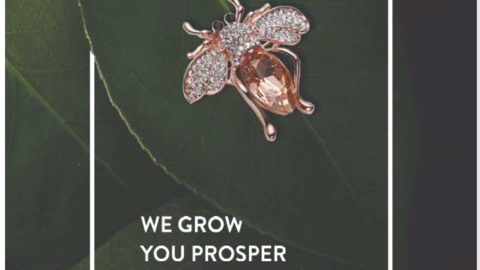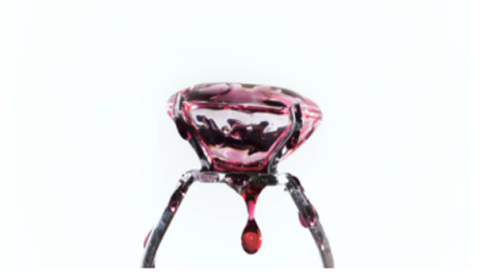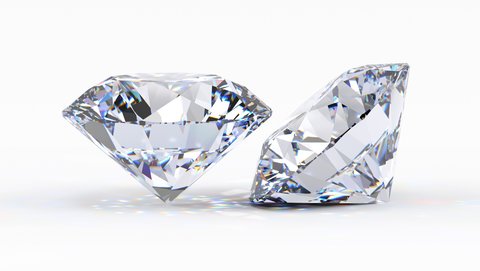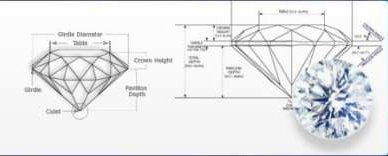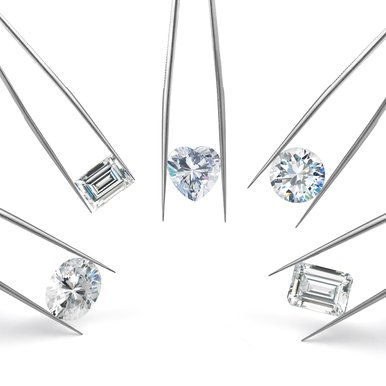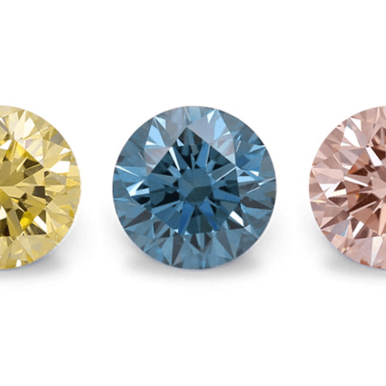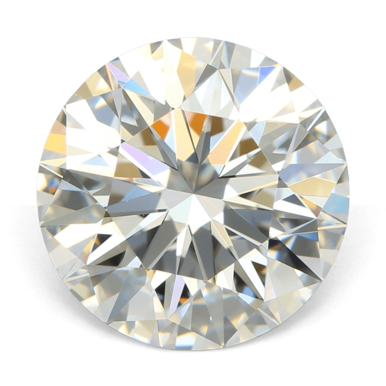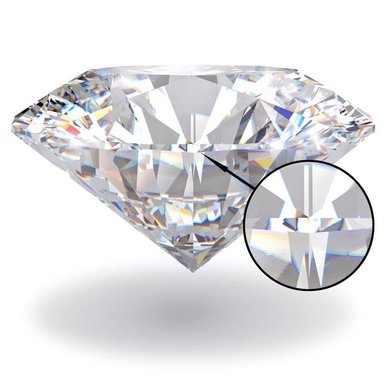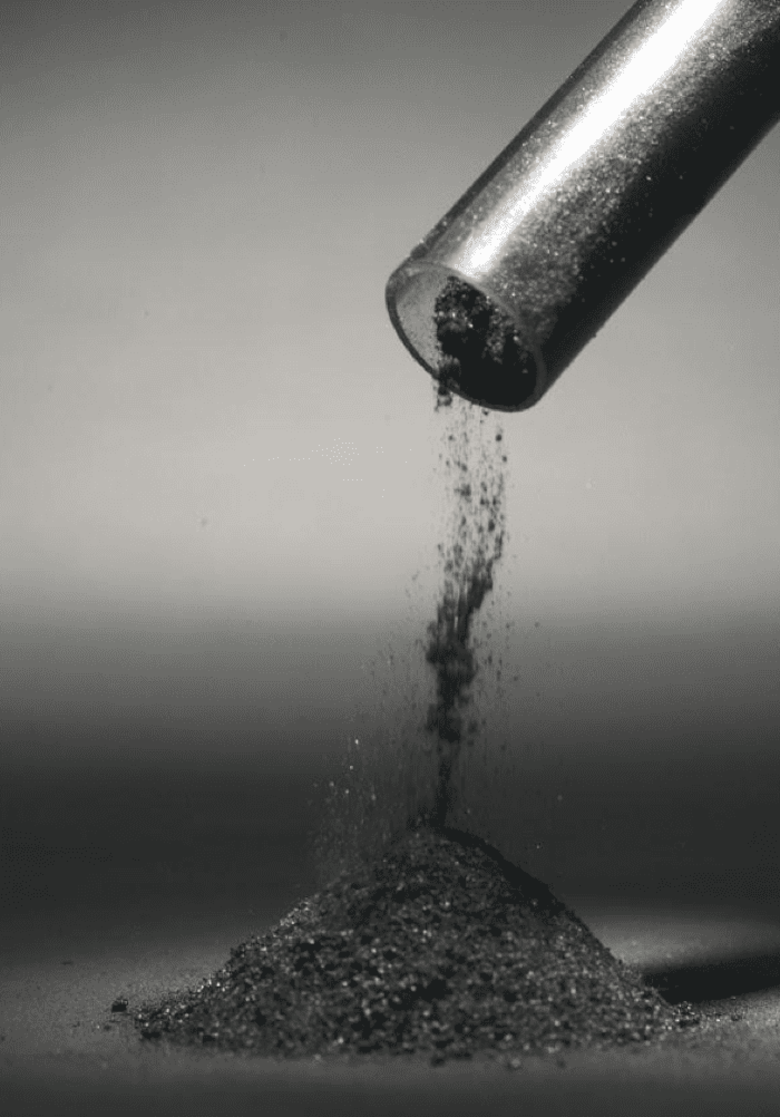
Memorial Diamonds: Transform Ashes & Hair into Certified Diamonds
Since the invention of the camera, people have always been capturing valuable moments of life.
But what if you could capture these memories into a nearly indestructible gem? What if you could always have them with you as a beautiful diamond?
We can make it happen!
LaBrilliante can create a unique piece of jewelry out of your wedding bouquet, a favorite book, or any other item that means the world to you. We can turn simply anything into graphite and grow and cut a one-of-a-kind polished diamond out of it.
Make valuable moments last forever!
| Carbon Source | Scientific Process & Carbon Yield | Timeline | Physical Properties | Emotional Significance | Price Range (vs Lab-Grown) | Customization Options | Certification |
|---|---|---|---|---|---|---|---|
| Human Ashes | - 2% carbon yield from cremains - Purification at 5400°F - HPHT at 4.5 GPa/1600°C - Requires ≥50g ashes | 120-150 days | - Si1+ clarity - Blue hues (boron traces) or color can be selected - 0.25-5.0 carats - Mohs 10 hardness | Memorialization, continuing bonds | $2500-$55k (+25-45% vs lab) | - 12 color options - Engravings - Multi-diamond sets | Laser inscription Origin tracking GIA/IGI certified |
| Human Hair | - 45-50% carbon yield - 50g required for 1ct - Nitrogen creates yellow hues - Same HPHT process as ashes | 120-150 days | - Fancy yellow common - 0.25-5.0 carats - Type Ib diamonds - Si1+ clarity | Living memorials Family connection | $2500-$55k (+25-45% vs lab) | - Mixed family/pet sources - Gradient colors - Prong/bezel settings | Laser inscription Origin tracking GIA/IGI certified |
| Pet Remains | - 20% carbon from ashes - 50g fur/hair needed - Combined purification with mementos | 120-150 days | - 0.25-5.0 carats - Unique inclusions (Si1+ clarity) - Higher color variability | Companion memorialization Multispecies connection | $2500-$55k (+25-45% vs lab) | - Pawprint engravings - Mixed media jewelry - Fur+ash combos | Laser inscription Origin tracking GIA/IGI certified |
| Plant Material | - 85% carbon from grape ash - Solvent purification - Requires ≥100g - Catalyst-assisted graphitization | 120-150 days | - 0.25-5.0 carats - Green/yellow hues or color can be selected - Si1+ clarity | Environmental legacy Event memorialization | $2500-$55k (+25-45% vs lab) | - Layered growth | Laser inscription Origin tracking GIA/IGI certified |
| Documents/Textiles | - 40-60% carbon yield - Acid-free dissolution - Requires ≥100g - Enhanced graphitization | 120-150 days | - Opaque varieties - Graphite veining (Si1+ clarity) - 0.25-5.0 carats | Heritage preservation Artistic expression | $2500-$55k (+25-45% vs lab) | - Text impressions - Mixed media capsules - Color zoning | Laser inscription Origin tracking GIA/IGI certified |

Cremation & Memorial Diamonds: Honoring Your Pet’s Memory
Memorial diamonds are genuine, laboratory-grown diamonds created from the ashes or fur of your beloved pet—also known as pet cremation diamonds. They offer a unique and lasting tribute to your companion’s memory. Labrilliante transforms the carbon from your pet’s remains into a real, certified diamond, identical in every way to natural diamonds.

Eternalize Memories with Cremation Diamonds by Labrilliante
Labrilliante transforms cherished memories into everlasting brilliance by crafting authentic cremation diamonds from the ashes or hair of loved ones. Each diamond is meticulously grown in the lab using cutting-edge HPHT technology, ensuring the highest quality and authenticity. Clients can personalize every detail—from the diamond’s color and cut to its jewelry setting—creating a one-of-a-kind heirloom that tells a personal story. With full transparency, certified processes, and compassionate support, Labrilliante turns remembrance into a tangible legacy, allowing you to carry your loved one’s spirit with you in a timeless, beautiful form.
Transform your loved one’s legacy into a timeless diamond—contact us today to begin your unique memorial journey.



Celebrate Life’s Milestones with Living Diamonds from Hair
Labrilliante offers an innovative service that transforms human hair, pet fur, or nearly any carbon-rich organic material—including personal letters, photographs, wood, flowers, and other meaningful items—into genuine, certified diamonds using advanced HPHT technology. These materials can be used independently or combined to create a unique, everlasting diamond with multiple layers of meaning, allowing clients to personalize their diamond's color, size, and cut while turning memories, achievements, or family bonds into tangible heirlooms with full certification and compassionate support.
Turn cherished moments into a timeless diamond—contact us today to start your unique creation.
The Science Behind Memorial Diamond Creation Process
The transformation of organic materials into diamonds follows a sophisticated multi-stage process that replicates and accelerates natural diamond formation:

1 Carbon Extraction and Purification
The process begins with a meticulous chemical analysis of the source material's carbon content to determine the most effective purification method. Special solvents dissolve extraneous elements, and the material undergoes desiccation in a vacuum furnace to achieve optimal purity. The goal is to isolate carbon with 99.99% purity (4N purity) from the original organic material.

2 Graphitization Process
The purified carbon then undergoes graphitization as an essential intermediate step before diamond formation. In this stage, the carbon atoms are arranged into the characteristic layered structure of graphite, preparing them for the transformation into diamond's crystalline lattice structure.

3 Diamond Synthesis through HPHT
The actual diamond creation occurs in specialized HPHT (High Pressure, High Temperature) presses weighing up to 14 tons. Within these machines:
- A tiny diamond seed is placed at the bottom of the press's inner core cube
- The interior is heated to over 2000°F, melting a catalyst metal
- The molten catalyst dissolves the high-purity carbon source
- Carbon atoms transport to the diamond seed and crystallize into the diamond cubic structure
- The growing diamond remains in the HPHT press for weeks or months, depending on the desired size
This process replicates the geological conditions that form natural diamonds deep in the Earth's mantle but occurs in a controlled laboratory environment over a much shorter timeframe.

4 Cutting and Polishing
Once a rough diamond is created, it undergoes expert cutting and polishing. First, the diamond undergoes "crosswork" to place the main facets, ensuring maximum weight retention, clarity, and optimal angles for the specific shape. Then the main facets are polished, followed by the addition and polishing of final facets including stars, and upper and lower girdle facets.
Unique Properties and Characteristics
Memorial diamonds possess all the physical properties of natural diamonds while offering unique characteristics tied to their organic origins:

Physical Attributes
These diamonds score 10 on the Mohs hardness scale, exhibiting the same durability and brilliance as natural diamonds. They are graded according to the standard 4Cs (cut, color, clarity, and carat), with quality comparable to naturally formed diamonds.

Color Variations and Their Causes
Memorial diamonds naturally form in various colors depending on trace elements present in the original carbon source:
- Yellowish hues result from nitrogen content
- Blue shades derive from boron
- Completely colorless diamonds come from fully purified carbon
Memorial diamonds are known for their bluish shades due to boron naturally present in human bodies and subsequently in cremation ashes. The intensity of color varies based on the concentration of these elements, making each diamond's color uniquely tied to its origin.

Growth Structure Differences
The production method influences the diamond's internal structure. HPHT diamonds (the method that is used for memorial diamonds creation) exhibit uneven color distribution with geometric patterns due to how elements like nitrogen concentrate during formation.
Authentication and Certification
The personal significance of memorial diamonds necessitates comprehensive authentication and certification processes:
Certification Authorities
Memorial diamonds can be certified by the same gemological authorities as natural diamonds:
- Gemological Institute of America (GIA)
- International Gemological Institute (IGI)
- European Gemological Laboratory (EGL)
These organizations verify the diamond's authenticity and provide detailed assessments of the 4Cs.
Traceability and Identification
Each memorial diamond receives a unique reference code laser-inscribed on its girdle, enabling complete traceability throughout the creation process. This identification ensures the diamond can be definitively linked to its original carbon source and authenticated as a genuine memorial diamond.

Guarantees of Authenticity
Reputable memorial diamond companies provide certificates guaranteeing:
- The authenticity of the diamond
- Its weight, cut, and color
- The origin from the provided carbon source
The Memorial Diamond Market - Prices
The memorial diamond industry has grown significantly since its inception in the early 2000s, with several established providers offering various services and price points:
Price Ranges and Factors
Pricing varies considerably based on several factors:
- Size (carat weight): From 0.10 carats to 3.0+ carats
- Color: Yellow diamonds are typically most affordable, followed by blue and colorless
- Cut and shape: Round brilliant cuts are standard, with other shapes priced differently
- Provider: Different companies have varying price structures
Current market prices range from approximately $895 for a small yellow diamond (0.10-0.19ct) to over $50,000 for large colorless diamonds (3.0+ carats). Labrilliante's pricing is among the most accessible, since it operates as a direct producer of lab grown diamonds.
| Carat | 0.5 | 0.75 | 1.00 | 1.50 | 2.0 | 3.0+ |
| Price | 2500$ | 3750$ | 5000$ | 9500$ | 13500$ | 18500$ |
Family Plans and Multiple Diamonds
Many providers offer discounts for creating multiple diamonds from the same carbon source:
- Typical discounts start from 5% for orders of several diamonds from the same carbon source
- These plans make memorial diamonds more accessible for families wanting to share the connection
- Labriiliante provides 15% discount for family plans
- Feel free to contact us for prices on special, bulk, or continuous orders
A Comprehensive Exploration of Diamonds Created from Alternative Carbon Sources
Memorial diamonds, also known as bio diamonds or donor graphite diamonds, represent a fascinating intersection of cutting-edge technology, personal memorialization, and innovative materials science. These remarkable gemstones are created from a diverse range of carbon-rich organic materials, transforming meaningful personal items into lasting treasures. Before delving into the details, it's worth noting that these diamonds are chemically, physically, and optically identical to natural diamonds, differing only in their origin and the deeply personal stories they represent.
Historical Development of Carbon-Source Diamond Technology
The journey toward creating diamonds from alternative carbon sources began over two centuries ago and has evolved through several key technological breakthroughs:
| Early Discoveries and Developments | Breakthrough Synthesis Methods | From Laboratory to Memorial Applications |
| The foundation was laid in 1797 when Smithson Tennant demonstrated that diamond consists solely of elemental carbon by comparing the volume of carbon dioxide formed from burning identical weights of charcoal and diamond. This discovery opened the theoretical possibility of creating diamonds from any carbon-rich material. Graphite was recognized as a carbon polymorph in 1855, further establishing the relationship between different carbon structures. | The first significant breakthrough came in 1954 when General Electric successfully used high pressure and high temperature (HPHT) to transform graphite into diamond. This achievement required pressures of around 150 kbar and temperatures up to 3000°C to overcome the substantial activation barrier between graphite and diamond structures. The development of transition metal catalysts later allowed diamonds to form at lower temperatures and pressures (approximately 90 kbar and 2000°C). | While industrial diamond production became commercialized in the 1950s, the specific application of creating memorial diamonds from human remains didn't emerge until 2003. It took a year of research to address the complexities of extracting pure carbon from cremated remains. First memorial diamond was created in 2004 as the first company specializing in memorial diamonds was founded the same year. Since then, the technology has expanded to include various organic carbon sources beyond human remains. |

Cultural and Ethical Dimensions
Memorial diamonds exist at an intersection of technology, memorialization, and diverse cultural perspectives:
Religious and Cultural Perspectives
Views on memorial diamonds vary across religions and cultures, particularly regarding cremation:
Judaism traditionally disapproves of cremation, preferring prompt burial
Christianity historically opposed cremation, but many denominations now accept it
Hinduism has long embraced cremation, aligning with beliefs in reincarnation and the emphasis of spiritual over physical remains
For cultures requiring traditional burial, companies like Labrilliante offer Hair Memorial Diamonds as an alternative, allowing for both traditional interment and the creation of a memorial diamond.
Environmental and Ethical Considerations
Memorial diamonds offer several environmental advantages compared to mined diamonds:
- They require less energy and water than traditional diamond mining
- They avoid the ecological disruption associated with mining operations
- Some companies even create carbon-negative diamonds by capturing atmospheric CO2
Legal Considerations
Creating memorial diamonds involves navigating various legal considerations:
- Regulations regarding the handling of cremated remains vary by region
- The deceased's final wishes as stated in wills or estate plans must be respected
- Documentation proving legal right to the remains is typically required
Emotional and Psychological Significance
Perhaps the most profound aspect of memorial diamonds is their emotional impact and psychological role in the grieving process:

1 Grief and Healing
Memorial diamonds can serve as a meaningful part of the grieving journey:
- They provide a sense of purpose and active participation in transforming grief
- They create a tangible connection to loved ones that can be held and kept close
- They represent the permanence and beauty that can emerge from loss

2 Personal Connection and Continuity
These diamonds offer a unique form of continuing bonds with deceased loved ones:
- They embody a physical transformation of the person's remains into something beautiful
- They can be worn as jewelry, keeping the loved one close in daily life
- They serve as a durable, lasting memento that can be passed through generations

3 Beyond Memorialization
Memorial diamonds also find application in romantic and celebratory contexts:
- Proposals featuring diamonds created from meaningful personal items
- Diamonds created from symbolic materials like love letters or significant flowers
- Family heirlooms combining carbon from multiple generations or family members
Future Innovations and Applications
The field of memorial and donor graphite diamonds continues to evolve with new technologies and applications:
Technological Advancements
Ongoing research is improving the efficiency and capabilities of diamond synthesis:
- Labrilliante cites "remastered catalyst formulas" and "upgraded incubation apparatus" that allow faster growth and larger diamonds
- Some researchers are exploring diamond doping with elements like boron to create semiconductors that don't heat up with use
New Applications
The technology behind memorial diamonds is finding additional uses:
- Carbon-negative environmental applications, turning atmospheric CO2 into diamonds
- Potential biomedical applications leveraging the biocompatibility of pure carbon
- Advanced electronics utilizing the semiconductor properties of doped synthetic diamonds
Donor Graphite diamonds represent a remarkable fusion of advanced materials science, personal memorialization, and emotional significance. From their origins in early carbon research to today's sophisticated HPHT processes, these diamonds have evolved into meaningful keepsakes that maintain physical connections to loved ones, pets, and significant memories. As the technology continues to advance and become more accessible, memorial diamonds offer an increasingly popular alternative to traditional memorialization practices, while providing the same beauty, durability, and value as natural diamonds.
The transformation of organic carbon—whether from human remains, pet fur, meaningful personal items, or even environmental carbon—into diamonds symbolizes the potential for beauty and permanence to emerge from loss and change. For many, these diamonds serve not just as jewelry or keepsakes, but as profound symbols of continuing bonds and enduring connections, crystallized into one of nature's most enduring forms.
FAQ about Lab-Grown Diamonds
While the article comprehensively covers the technical aspects of donor graphite diamonds, it doesn't explore their market positioning relative to other lab-grown alternatives. Today's lab-grown diamond market is experiencing explosive growth, with donor graphite diamonds occupying a unique emotional niche that traditional lab-grown diamonds cannot match. Unlike conventional lab diamonds created from generic carbon sources, donor diamonds carry profound personal significance that resonates with consumers seeking meaningful luxury.
Market research indicates that donor graphite diamonds are increasingly appealing to millennials and Gen Z consumers who prioritize both emotional connection and sustainability. These demographics are driving a remarkable 27% year-over-year growth in the memorial diamond segment, outpacing the broader lab-grown market's 20% growth rate. Companies like Pandora have recognized this shift, with recent data showing that personalized memorial jewelry represents one of their fastest-growing product categories.
Unlike standard lab-grown diamonds that compete primarily on price point (typically 30-40% less expensive than natural diamonds), donor diamonds operate in a distinct emotional category where price sensitivity is lower and the storytelling aspect of the product carries premium value.
The article touches on production techniques but doesn't explore emerging technologies that could revolutionize the donor diamond industry. Several cutting-edge innovations are reshaping this space:
- Rapid Graphitization: New catalyst technologies are reducing the graphitization phase from weeks to just days, with researchers at the Tokyo Institute of Technology demonstrating a 73% reduction in processing time through novel pressure-cycling techniques.
- Quantum Diamond Microscopy: This breakthrough imaging technology allows for unprecedented precision in diamond growth, enabling more intricate customization of internal structures and inclusions that can create unique optical phenomena specific to each donor's carbon source.
- Hybrid HPHT-CVD Processes: Companies like Aether Diamonds are pioneering combined production methods where initial seeding occurs through HPHT while growth continues through Chemical Vapor Deposition, reducing energy requirements by up to 45% while allowing for more precise control of color outcomes.
- AI-Optimized Growth Parameters: Machine learning algorithms are now being deployed to analyze carbon source composition and determine optimal growth conditions, resulting in higher success rates and more consistent quality across various donor materials.
These advancements suggest that within 3-5 years, production times could decrease by half while offering more sophisticated customization options, including controlled color zoning that could create symbolic patterns within the diamond's structure.
The legal landscape surrounding donor graphite diamonds remains complex and largely unexplored in the article. Several critical regulatory questions are emerging:
- Cross-Border Transportation: Different countries maintain vastly different regulations regarding the transportation of human remains. The European Union recently implemented stricter documentation requirements under Regulation EU 2022/341, while Japan requires specific permits from the Ministry of Health for any import of cremated remains.
- Status Classification: Legal ambiguity exists regarding whether transformed remains maintain their legal status as human remains. A landmark 2023 case in Germany (Reichmann v. State of Bavaria) established that once transformed into diamond form, remains no longer fall under funerary regulations but instead under jewel transportation laws.
- Chain of Custody Documentation: Emerging regulations in countries including Australia, Canada, and Singapore now require companies to maintain rigorous chain-of-custody documentation, with substantial penalties for violations. The International Memorial Diamond Association (IMDA) is working to establish global standards that would streamline compliance.
- Inheritance Law Implications: Interesting questions are arising about the inheritance status of memorial diamonds. In several recent cases, courts have had to determine whether donor diamonds constitute personal property or maintain special status as human remains with different inheritance implications.
Companies operating in this space must navigate an increasingly complex regulatory environment, particularly those serving international clients where multiple jurisdictions may apply to a single transaction.
The article doesn't address the significant market disruption that donor graphite diamonds are creating within the traditional diamond industry. Several important trends are worth noting:
- Market Repositioning: Traditional diamond companies including De Beers have made strategic investments in memorial diamond technology, with the natural diamond industry increasingly emphasizing the "natural origin story" to differentiate from both standard lab-grown and donor diamonds.
- Price Pressure and Segmentation: While donor diamonds occupy a distinct emotional category, their growing popularity is contributing to broader consumer acceptance of lab-created diamonds, creating downward pressure on certain segments of the natural diamond market, particularly in the 0.5-1.0 carat range where prices have decreased 8-12% in markets with high donor diamond adoption.
- New Marketing Narratives: Traditional diamond marketing historically centered on romance and status. The rise of donor diamonds has pushed the entire industry toward more emotionally nuanced messaging around meaning, personal significance, and lasting connection.
- Retail Integration: High-end jewelry retailers who once exclusively carried natural diamonds are increasingly creating dedicated sections for memorial and donor diamonds, with companies like Tiffany & Co. piloting "Legacy Collection" spaces in select markets for donor diamond display and customization.
This influence extends beyond consumer markets into industrial sectors, where technologies developed for donor diamond creation are finding applications in precision engineering and semiconductor manufacturing.
While the article primarily focuses on memorial and jewelry applications, donor graphite diamonds are finding remarkable applications in diverse fields:
- Medical Implants: The biocompatibility of carbon from human sources is creating promising applications for donor diamonds in medical implants. Researchers at ETH Zurich have developed prototype neural interfaces using diamonds created from a patient's own carbon, potentially reducing rejection issues while creating emotional connection to medical devices.
- Quantum Computing: The controlled introduction of nitrogen-vacancy centers in donor diamonds shows particular promise for quantum computing applications. The Massachusetts Institute of Technology is exploring how variations in donor sources affect quantum coherence times in diamond-based quantum bits.
- Cultural Preservation: Museums and cultural institutions are exploring donor diamonds as a means of preserving biological material from historically significant individuals or extinct species. The Natural History Museum in London recently created diamonds from preserved tissue samples of the last northern white rhino as part of their conservation program.
- Space Exploration: NASA's Advanced Materials Division is investigating donor diamonds created from mission-specific carbon sources as radiation-resistant data storage devices for long-duration space missions, capitalizing on diamond's exceptional durability in extreme environments.
- Artistic Expression: A growing movement in contemporary art is utilizing donor diamonds in installations that explore themes of transformation, permanence, and human legacy. Artist Zhang Wei's acclaimed "Carbon Continuity" exhibition featured donor diamonds created from ancient manuscripts, raising profound questions about cultural preservation and transformation.
These emerging applications suggest that donor graphite diamonds represent not just a memorial technology but a versatile advanced material with far-reaching implications across multiple disciplines and industries.


